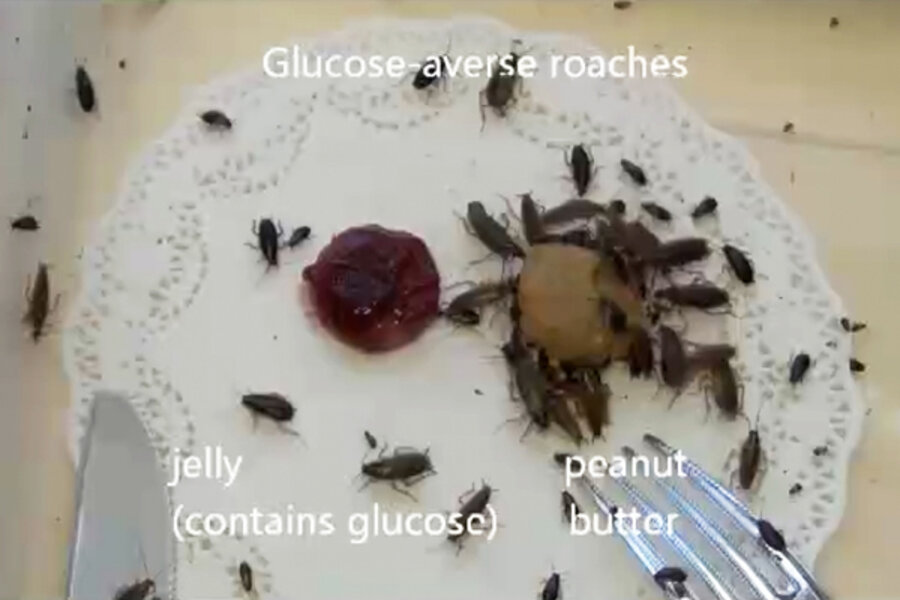How cockroaches are evolving to avoid sweets
Loading...
Thanks to natural selection, some cockroaches have rapidly evolved the ability to check out of Roach Motels.
Since the 1970s, bait traps that use glucose to disguise the taste of a deadly toxin have been a popular way to rid the bugs from homes. But beginning in the 1990s, the traps began losing their effectiveness. Scientists found that some roaches had evolved an aversion to the glucose. The pest-control industry moved on to new types of bait, but exactly how the insects lost their sweet tooth has remained a mystery.
Now a team of biologists at North Carolina State University say that they have uncovered the neural mechanism behind the cockroaches' adaptation. A study published in the current issue of Science reports that for some roaches, glucose activates taste receptors normally associated with bitter compounds, such as caffeine, that the insects don't care for.
The scientists performed experiments on groups of normal and glucose-averse German cockroaches, a species that makes its home in apartments, hotels, and restaurants worldwide.
Like many other insects, cockroaches taste with tiny hairs around their mouths and other parts of their bodies that can distinguish between sweet and bitter flavors by firing specialized taste neurons. In normal German cockroaches, glucose activates the sweet neurons. But the scientists discovered that, in the glucose-averse roaches, the bitter neurons were also firing.
It's well known that populations of pests can often develop resistance to insecticides. But in this case, poison is triggering a behavioral change.
“Most times, genetic changes, or mutations, cause the loss of function,” said NC State entomologist and study co-author Coby Schal, in a press release. “In this case, the mutation resulted in the gain of a new function – triggering bitter receptors when glucose is introduced. This gives the cockroach a new behavior which is incredibly adaptive. These roaches just got ahead of us in the arms race.”
This adaptation comes at a cost, however: The glucose-averse roaches tend to grow and reproduce more slowly than their less-picky counterparts.
As you can see in this video below, the normal cockroaches seem to enjoy both jelly that contains glucose and peanut butter that doesn't. But the glucose-averse roaches ignore the jelly and flock to the peanut butter.
If looking at all these roaches crawling on a plate gives you the willies, just remind yourself that your aversion to the roaches – just like their aversion to glucose –is in part an adaptive trait that helped your ancestors flourish.








